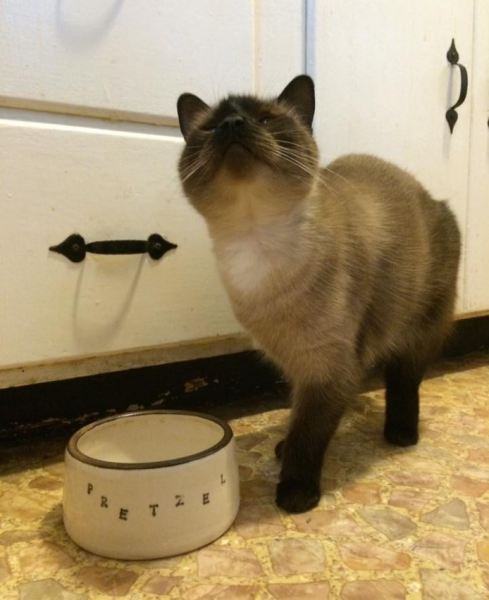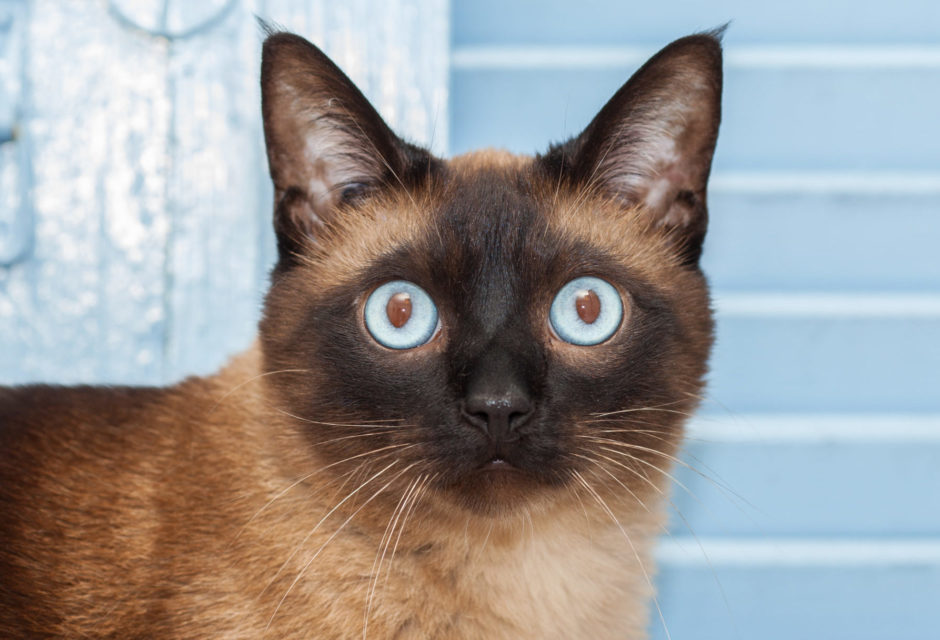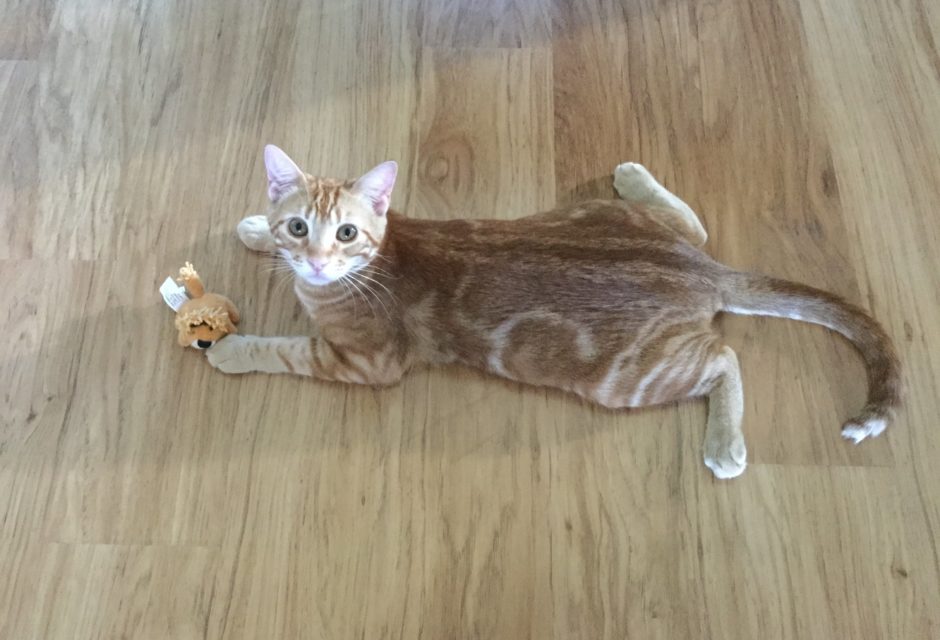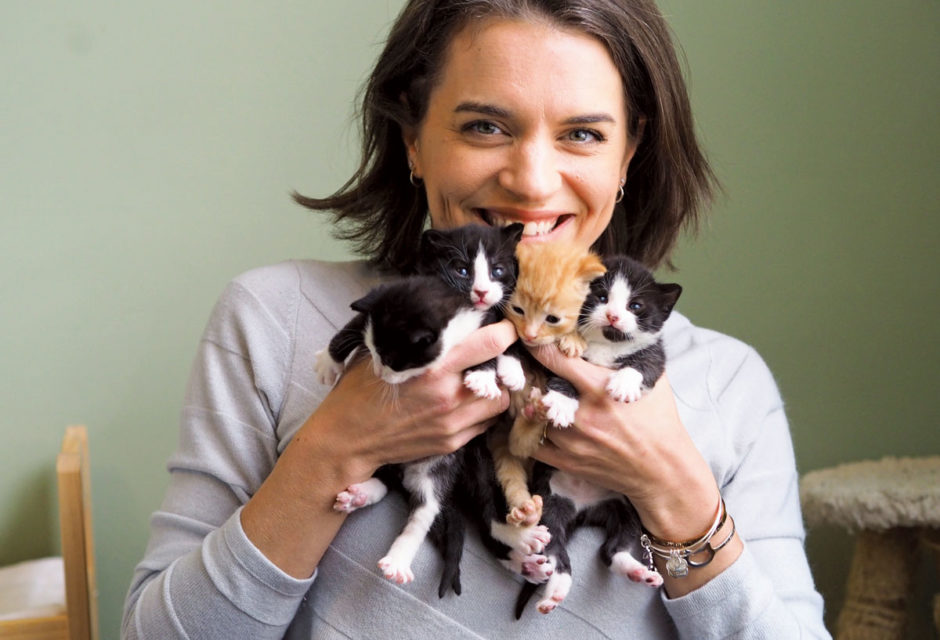
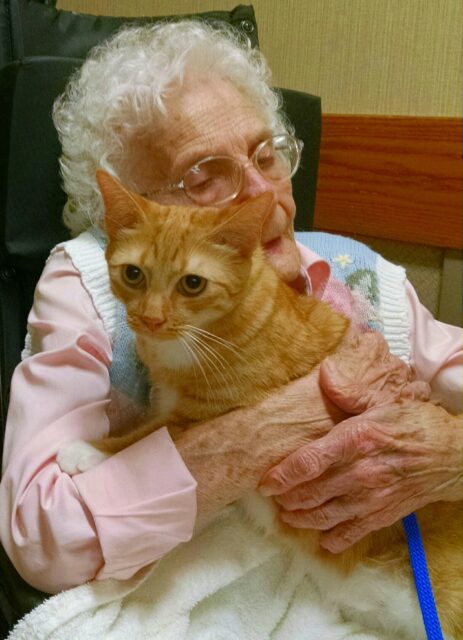
Sweet Therapy Cats
Therapy cats are making a big difference—in hospitals, nursing homes, and in the lives of their handlers
For most people, the term “therapy animal” conjures up visions of a dog—maybe a Lab or Golden Retriever—visiting facilities like hospitals, nursing homes, and schools to interact with patients, residents or students.
It’s a bias that Natalie Pond, marketing and strategic partnerships coordinator for Bellevue, Washington-based Pet Partners, is very familiar with. But while dogs are definitely the most common therapy animal, cats are gaining ground.
In 2016, Pet Partners had “15,500-plus volunteer therapy animal teams in 50 states providing what we call animal-assisted interventions or AAIs. Of those, about 94 percent did, in fact, include dogs,” she says. “However, we pride ourselves on registering many species other than dogs—horses, birds, rabbits and, of course, cats.”
Currently, Pet Partners has a total of 213 registered cat teams across the U.S.—a number that, Natalie says, can only grow. She can also think of a few reasons why felines are still playing catch-up to their canine counterparts in the realm of animal therapy.
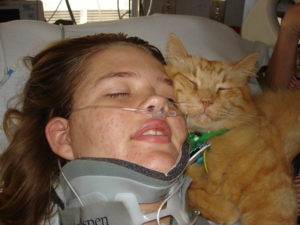
And that, she says, is a good thing, as Pet Partners does get specific requests for visits from cats.
“There’s truth behind that notion of cat versus dog people—some people just have a natural affinity toward cats,” she explains. “Say, a resident in a nursing home; maybe they had positive associations with cats in childhood, or fond memories of a pet that passed or that they had to give up. For that reason, I’m really glad that we have our cat teams, with such attentive handlers that are every bit as devoted to the work as those with dogs. They make great ambassadors for our program.”
Two such ambassadors, from Spring Bank, Texas, are Beverly Oakes and her cat, Junior. Though Junior passed away last October after a valiant battle with cancer, he served as a Pet Partners therapy cat for 16 of his 17 years.
“I rescued Junior in a rural area where we used to farm—he was one of several kittens dumped at a home of some folks who couldn’t care for them financially,” Beverly says. “The little girl who lived there begged me to take him but, as I already had several cats, I declined. However, each time I saw him, I was aware he held something special for me.”
The bond between Beverly and Junior grew quickly—she often took him out with her and enjoyed “sharing” him with others. She also noticed a “special sensitivity” in the orange Tabby—one incident in particular stands out.
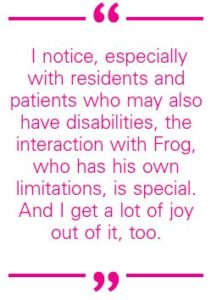
At a year old, Junior became registered with Pet Partners, called the Delta Society at the time. Actually, he and Beverly became a registered team, as, Natalie explains, the process very much includes cat and handler alike.
“It’s actually a process that starts at home, with a pet owner assessing and identifying if their cat will be suited to and enjoy the work, as Beverly did with Junior,” she says. “We don’t want the cat to just tolerate these interactions but to actually thrive off them and, the fact is, some cats would simply prefer to be left alone or stay at home. They may be fearful of being taken to strange places or hate traveling in a carrier and, obviously, would not likely enjoy the experience of being involved in AAI.”
A highly social cat like Junior, however, is an excellent candidate for therapy cat work. According to Beverly, “His incredibly laid-back personality and sensitivity to people enabled him to interact with all sorts of populations,” and that’s exactly the kind of feline that, as Natalie says, will “thrive” as part of a therapy animal team.
“The main thing is that they need to be amenable to interacting with strangers—that they are friendly and tolerant. I think that most people can really successfully gage this with their own animal,” she says.

“We go through all the different ways in which you can support your cat on a visit; how to be safe and responsible when you are volunteering as an animal therapy team,” Natalie outlines. There is also a skills and aptitude screening that involves a team evaluation of both handler and cat. This screening basically emulates what an actual visit would look like. “For cats we may do an ‘interacting with a friendly stranger’ exercise or an ‘accepting petting’ exercise,” Natalie continues. For cats who will walk on a harness—and not every cat will, nor do they need to—we could do an ‘out for a walk’ exercise. Another option is a ‘reaction to distraction’ exercise, where we’d play audio of, say, an object falling. It’s OK if the cat startles, but what we’re looking for is to see how they recover—and, perhaps most importantly, how the handler proceeds. We’re looking for handlers who are proactive in the way that they interact with their cat, who are reassuring when something out of the ordinary occurs.”
A “yelling” exercise, she continues, will demonstrate how a cat reacts to raised voices, while a “passing between three strangers” exercise rotates an animal from lap to lap to assess whether the cat will “stay in place.”
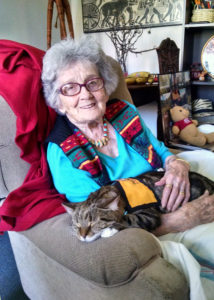
Junior, for his part, passed all of these components with flying colours, and went on to be a prolific therapy cat within the Pet Partners family, visiting, along with Beverly, nursing homes and hospital pediatric wards. In fact, Junior was the impetus for San Antonio’s University Hospital starting its Paws Up Pet Therapy program in 2014. When Junior retired from therapy cat work in 2016, the hospital held a retirement party for him.
“In addition to pediatrics, Junior visited two different libraries where children read to him, participated in numerous college de-stressors, visited nursing homes, and participated in many presentations through the years, including a conference that brought in children with a rare illness from all over the world. He also worked some with military patients,” Beverly says. “He eased people’s fears, took away some of the pain, made people smile, and we even watched blood pressures drop during and after interacting with him.”
“Animal-assisted interactions are thought, anecdotally and, increasingly, through actual scientific research and studies, to have a broad range of benefits, both physical and emotional,” Natalie confirms. “One thing we’ve heard a lot from care facilities, where patients may be isolated from family and friends, is that the social benefits are huge. With cats in particular, who are small enough to sit in a lap or with a patient on a hospital bed, the interaction can be very special.”
Another Pet Partners volunteer, Janet Freehling of Norwalk, Ohio, agrees. After all, she’s seen the tremendous impact a therapy animal can have first hand. Both of her cats, Cosmo and Tux, were registered to do the work and, though both have since passed, experienced many positive interactions with clients.
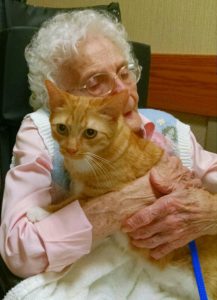
As man and cat got acquainted, the phone rang. The man answered and, Janet recalls, told the caller to ring back later because “Cosmo, the cat, is here.”
“It was amazing to me to see the difference a cat could make,” she says, adding that such incidents occurred time and time again over the many years she volunteered with her therapy cats.
“Both Cosmo and Tux enjoyed their work,” she recalls. “They were both very people oriented. Cosmo was always calm—even with loud, tearful or agitated people. Medical equipment, sick, agitated or dying people never upset him. Tux’s attitude was very different. He seemed to expect people to pay attention to him. He’d often interrupt patients trying to shoot pool by lying in the middle of the table. It made me smile when no one seemed upset at the delay in game.”
A second American organization, Love on a Leash, also provides a framework and certification for people to provide pet therapy to others. Founded in the early 1980s in San Diego, the non-profit boasts chapters in nearly every state and more than 2000 members working as therapy teams with their dog, rabbit or cat.
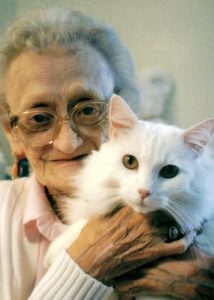
“A lot of people don’t realize cats can do this,” Jaetta says. “The key is they need to really like people and enjoy going out and being touched and talked to by strangers, and remain calm in those situations. Basically, a very social cat that likes everyone and anyone could be certified as a therapy cat.”
In fact, social cats with disabilities can do therapy work, too—a topic that’s very close to Jaetta’s heart. Her Frog was born with a condition called cerebellar hypoplasia, comparable to cerebral palsy in humans. Though it took Frog a bit longer than Flash to become Love on a Leash certified, he enjoys the work just a much as his fur brother—and makes just as much of a positive impact.
“We mainly visit nursing homes, and Frog is a regular cuddle bug with the residents,” she says. “While Flash is a social butterfly who wants to spend a few minutes with one person and then move on to the next, Frog will just lay happily in a lap forever. I notice, especially with residents and patients who may also have disabilities, the interaction with Frog, who has his own limitations, is special. And I get a lot of joy out of it, too.”
That, in fact, is another remarkable outcome of the work done by therapy cats: the positive impact on the handler.
“Just seeing someone’s face light up when the cats are there—it’s the most heart-warming feeling imaginable,” Jaetta says. “And to share that with my cats, who are my world. There’s nothing better.”
Her sister agrees.
“You see, laughter, you see tears—it’s very emotional in the best way,” says Paula. “I often hear, ‘Oh, I used to have a cat when I was growing up … ’ and it’s nice knowing that it may be helping that person to relive a happier time in their life. I go home feeling good every time.”
The sentiments are similar for Beverly, who is now hoping that her new kitten, Zane Grey, will follow in Junior’s paw prints and become a therapy cat.
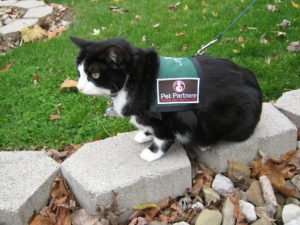
For Janet, being part of a therapy team with both Cosmo and Tux has impacted her life profoundly.
“My therapy pets have changed my life for the better,” she explains. “I tend to be shy and quiet but, when my therapy partner is with me, I can comfortably talk to anyone and have given many talks promoting rescue and therapy animals. The first time I took Cosmo to visit the nursing home was an ‘aha’ moment for me. Residents, staff and visitors wanted to meet the cat. It’s funny—they often forget my name, but never Cosmo’s! I feel blessed to have had him and Tux in my life, and hope to find another cat who can enjoy therapy work with me.”
Join the newsletter and never miss out on cat content again!
"*" indicates required fields
By clicking the arrow, you agree to our web Terms of Use and Privacy & Cookie Policy. Easy unsubscribe links are provided in every email.





